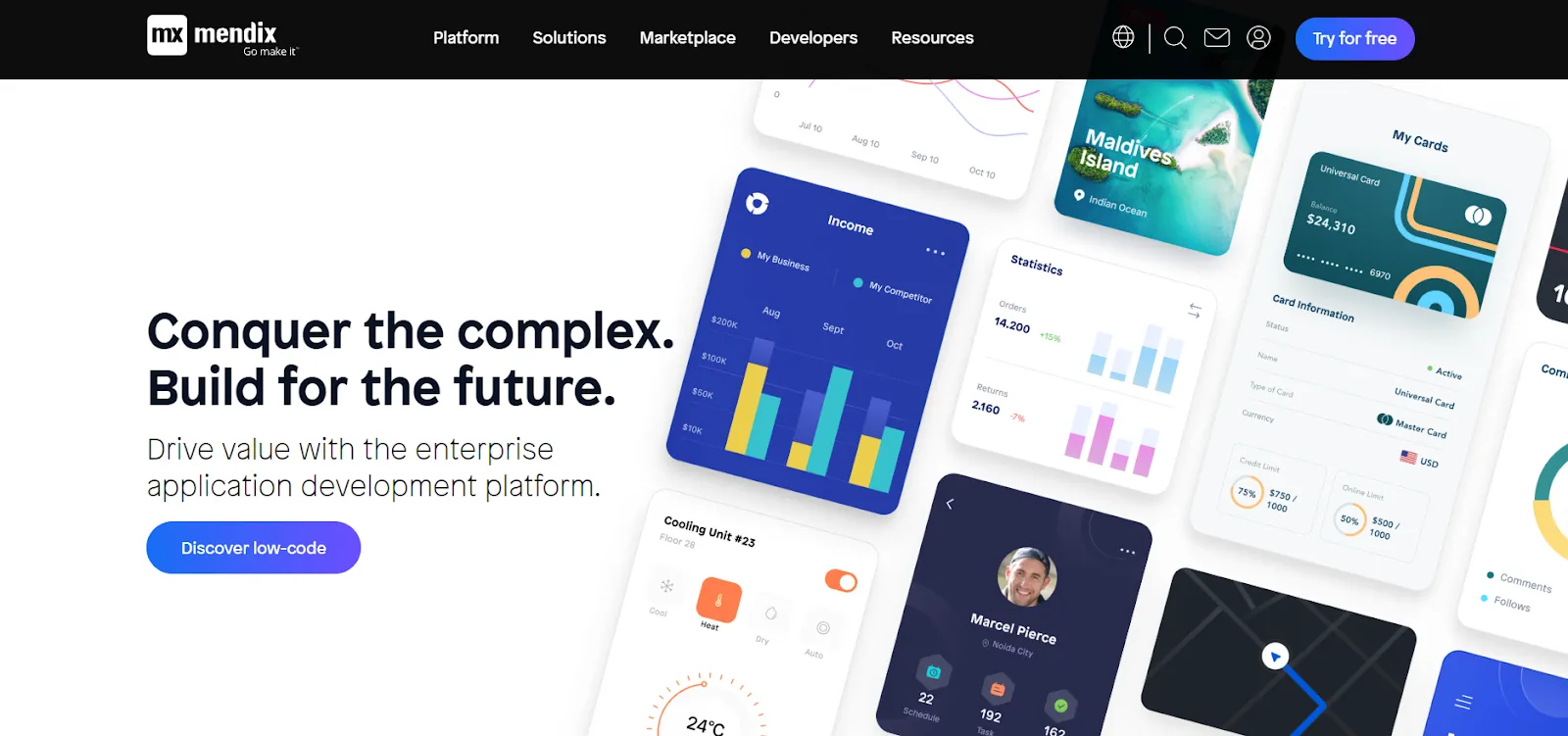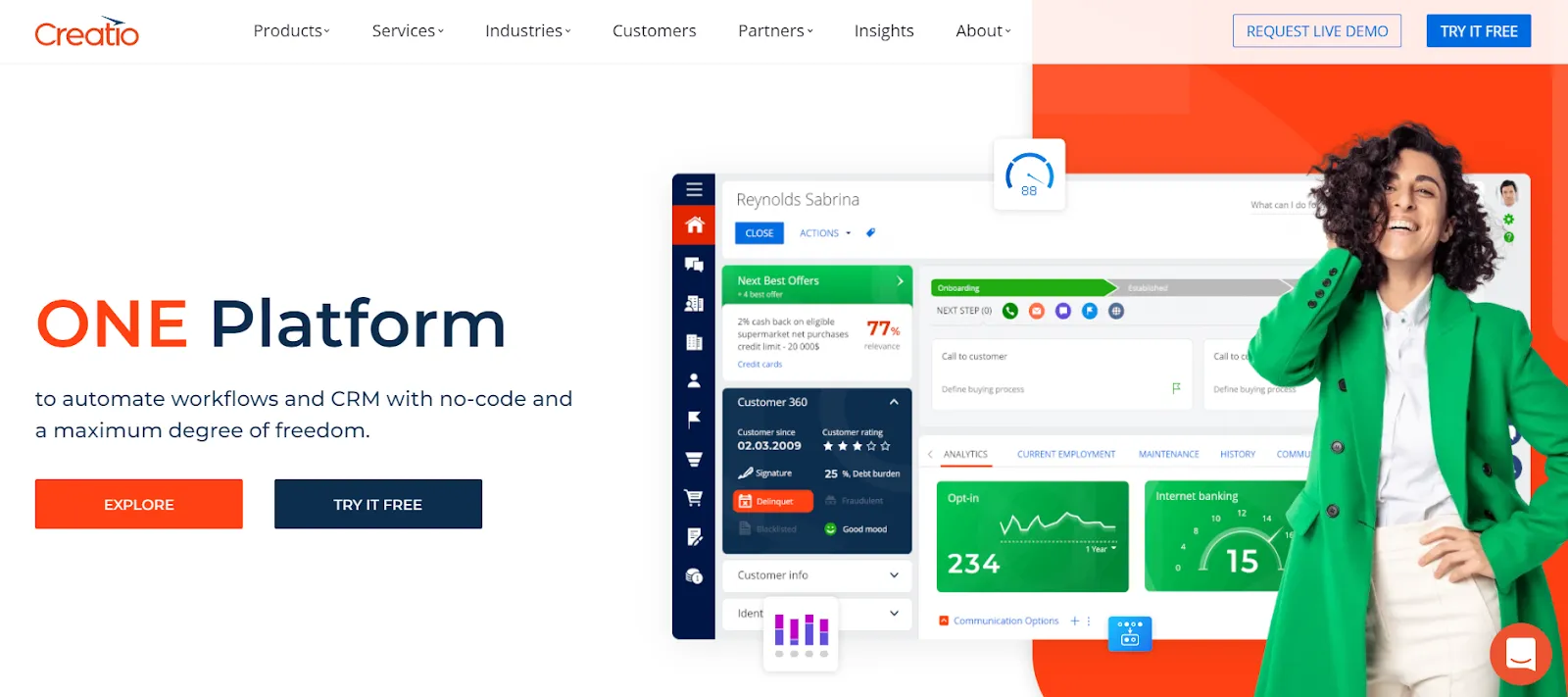Technology

5 min

Low-code development platforms (LCDPs) require some basic coding skills for users to develop and integrate complex applications. In contrast, no-code development platforms (NCDPs) do not require programming knowledge.

By Vinamra Singh
21 Jul, 2022
Thanks to the new technology updates, it is currently conceivable to configure and design simple/complex projects. Now, we rarely need any help from experts to build a fantastic product. Building apps has become simpler than at any other time with the involvement of low-code or no-code platforms. Making complex applications without spending high costs or expert developers' help is easy.
Furthermore, you needn't bother to be a coding master to do such projects. Various low code no code platforms guarantee that you compose next to zero code and create excellent programming, sites, and apps.
No-code and low-code development platforms govern the coding business/industry. As per Forrester's report, the worldwide low/no- code business will develop to $30 billion by 2025.
This blog will provide a quick look at some of the best low-code and no-code platforms. Let's discuss what is Low code and No code in detail.
Low code platforms permit a simple work process automation. It assists with developing processes and gives various capabilities to non-specialized individuals/coders. The market is loaded with a few low-code or no-code platforms, offering false commitments, complex UIs, and costly service models.
Low Code is a visual representation of the software development process. Low Code mechanizes each step of the product development life cycle to convey solutions for various business needs.
No-Code focuses on residents/citizens, as individuals not ready to make software frameworks. It is because of an absence of software improvement abilities.
No-Code is considered a 'citizen development,' employing individuals without prior knowledge. No-Code is helpful for primary clients confronting the front-end with pre-characterized database structures.
Low-code and No-code stages are becoming famous daily as they offer a quick option in contrast to traditional development processes. Furthermore, tech pioneers with no coding abilities and expert developers are using them to meet their business needs.
If you want to discover the rise of no-code/low-code app development, check out our blog on low & no-code app development benefits and challenges.

Visual LANSA is a low-code, Integrated Development Environment (IDE). It permits users/clients to construct apps on Windows OS, browsers, and cell phones for AWS and Azure cloud structures.
Platform: Cloud, IBM I, Windows
Price: Basic plan starts at $999.00 per month, and the Standard plan starts at $4999.00 per month, Free Trial Available

Caspio is one more fantastic choice for building cloud applications without coding. This development platform is appropriate for making versatile, reliable, and secure web applications.
Platform: Web Windows, Mac, Linux
Price : Explore plan: $128/year or $150 monthly; Build plan: $255/year or $300 monthly, Free Trial Available

Appian is a low-code application that has a simple design to foster software. It assists you in automating your association's work. Appian permits clients to make business process management BPM applications for organizations. BPM programming helps firms in arranging and streamlining business processes.
Platform: Cloud, Windows, Mac, Linux UNIX, Solaris, etc.
Price: Basic Plan starts at $75.00 per feature per month. They do not have a free version, Free Trial Available.

Zoho Creator is a tool that assists you in building software with no preparation and messy code. It empowers you to change over business rationale into a practical work process. This software gets coordinated with PayPal, QuickBooks, and Zapier .
Platform: Cloud,iOS, Android,PWA.
Price: Professional Plan: $25/user/month and Ultimate Plan: $400/month, Free Trial Available

Mendix offers process mechanization through applications that bring systems, information, and individuals together. Use your creative mind to create apps that save time for big businesses that assist organizations as expected.
Platform: Windows, Web, Linux, Android, iOS, and Windows phone.
Price: Single App plan: Starts at $1875/month, Pro: Starts at $5375/month, and Enterprise: Starts at $7825/month, Free Trial Available (The community version)

With OutSystems, organizations can make applications for different platforms. The platform's essential elements incorporate constant execution dashboards and robust safety measures.
Platform: Windows, Web, Mac, Linux, Android, iOS.
Price: The enterprise plan: Starts at $6250/month, and the Universal plan: Starts at $15000/ month, Free Trial Available

With Quickbase, you can unlock the max capacity of your business activities by consolidating this platform. We can fabricate top-caliber, result-driven applications that associate thoughts, data, and individuals everywhere.
Platform: Windows, Web, Android, iOS.
Price: Premier plan starts from $25/user/month and the Platform plan at $40/user/month, Free Trial Available

Linx is a development tool for the fast turn of events and back-end applications like APIs, integration, and robotization.
Platform: Windows and Mac
Price: Self-support pack starts from $349/YEAR, Standard $799/YEAR AND Premium $ 1,299, Free Trial Available

Creatio is a Software as a service (SaaS) low-code platform for process and customer relationship management( CRM ). It can implement rules, automate tasks, and third-party integrations.
Platform: Windows, Web, Mac.
Price: Enterprise Edition starts from $25/ user/month, Free Trial Available

The Bubble can be the quickest method for fostering an application without composing a single line of code. Moreover, YouTube guarantees to smoothen the expectation to learn and adapt with this unique platform.
Platform: Windows, Android, iOS.
Price: Proficient plan starts from $129 /month, and the Creation plan starts from $529/month, Free Trial Available
Each low-code or no-code platform mentioned above offers various advantages. Be that as it may, with so many choices accessible, picking the ideal one for yourself can be interesting.
Also, it would help if you thought about your business prerequisites before taking your pick. Be that as it may, aside from a solid low code stage, fabricating a decent programming arrangement requires a group of good programmers.
I trust the above info on low-code and no-code platforms will assist you in figuring out and choosing the best platform per business necessities.
So, don't wait to create your application with these Low-Code/No-Code platforms.
Thanks!!!
Low-code and no-code platforms benefit many users, including business analysts, citizen developers, entrepreneurs, and even experienced developers who want to accelerate the application development process. These platforms enable faster development cycles and empower users with limited technical skills to create applications.
Some key advantages of low-code and no-code platforms include the following:
Yes, low-code and no-code platforms can be used to develop complex applications. While they may have limitations compared to custom-coded solutions, these platforms often provide advanced features and integrations that allow for the developing of sophisticated applications.
Low-code and no-code platforms seamlessly integrate with popular APIs, databases, and third-party services. Users can connect their apps to external systems, access real-time data, and unlock a world of possibilities. The result is a robust and interconnected app ecosystem.
Low-code and no-code platforms offer numerous benefits, but they also have limitations. These can include constraints on customization, scalability, and flexibility compared to custom-coded solutions. Additionally, traditional development methods better serve highly specialized or unique application requirements.
Low code and no code platforms alleviate the burden of app maintenance. They often automatically handle updates, bug fixes, and security patches, enabling users to focus on their app's success. Additionally, vibrant user communities associated with these platforms provide valuable assistance and support.
Yes! With no code platforms, individuals can build fully functional apps without being coding experts. By leveraging intuitive drag-and-drop interfaces, anyone can construct their dream applications and enjoy the satisfaction of creating something remarkable.
Generative AI Tech Stacks: Choosing the Right Tools for Scalable AI Development
By Dhruv Joshi
5 min read
Choosing Best Tech Stack for Web App Development: Performance, Cost, and Scalability
By Dhruv Joshi
5 min read
Top 9 Tech Stacks for Scalable Web Application Development
By Dhruv Joshi
5 min read
Generative AI Implementation Strategy: From Concept to Deployment (Step-by-Step Guide)
By Sannidhya Sharma
5 min read

Technology

7 min
Generative AI is moving fast into enterprises, from banks to hospitals to government agencies. Adoption is rapid, but security planning lags. Unlike traditional systems, these models can be exploited through prompt injection, poisoned data, or manipulated to leak sensitive information. They are also misused for phishing, deepfakes, and malicious code.


Technology

7 min
AI-powered Web Application Firewalls (WAFs) go beyond static rules by using machine learning, anomaly detection, and predictive analysis to block zero-day threats, reduce false positives, and protect APIs at scale. Unlike traditional WAFs, they self-learn, adapt in real time, and cut operational costs while improving compliance and trust.


Technology

5 min
AI is redefining mobile app security by transforming how threats are detected, tested, and prevented. From continuous monitoring and fraud detection to compliance with regulations, AI ensures apps remain resilient against modern risks. This means safer apps, protected users, and stronger businesses. Investing in AI-driven security today builds trust, drives growth, and secures long-term competitive advantage.


Feeling lost!! Book a slot and get answers to all your industry-relevant doubts